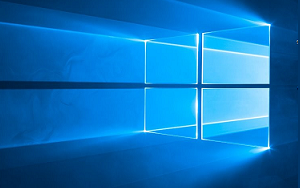Learn how to efficiently disable pop-ups in Google Chrome to enhance your browsing experience. This guide provides a step-by-step approach to manage pop-ups using Chrome settings and third-party extensions.
Introduction
Pop-ups can be incredibly annoying and disruptive, hindering your browsing experience and, sometimes, posing security risks. Google Chrome, being one of the most popular web browsers, offers several methods to disable pop-ups. This comprehensive guide will walk you through the steps to manage and disable pop-ups effectively.
Why Disable Pop-Ups?
- Improved User Experience: Pop-ups can interrupt your browsing, making it difficult to read or interact with website content.
- Enhanced Security: Some pop-ups may contain malicious software or phishing attempts.
- Better Performance: Blocking pop-ups can reduce the load on your browser, ensuring smoother performance.
Steps to Disable Pop-Ups in Chrome
1. Using Chrome Settings
Google Chrome provides built-in settings that allow you to block pop-ups. Here's how to do it:
- Open Chrome: Launch your Google Chrome browser.
- Access Settings: Click on the three vertical dots (menu) at the top-right corner and select Settings.
- Navigate to Privacy and Security: Scroll down or use the left sidebar to find and click on Privacy and security.
- Site Settings: Click on Site settings to access permissions and settings for websites.
- Pop-ups and Redirects: Find and click on Pop-ups and redirects.
- Block Pop-ups: Toggle the switch to Blocked (recommended) to disable pop-ups.
By default, Chrome blocks pop-ups from appearing automatically. However, this setting ensures they remain blocked, providing you with a seamless browsing experience.
2. Allow Exceptions for Trusted Sites
Occasionally, you may want to allow pop-ups from trusted websites. Here's how you can manage exceptions:
- Go to Pop-ups and Redirects: Follow the steps above to reach the Pop-ups and redirects section.
- Add Site Exceptions: Under Allowed to send pop-ups and use redirects, click Add.
- Enter Website URL: Type the URL of the site you trust and want to allow pop-ups from.
- Confirm Addition: Click Add to save the exception.
This feature is useful for websites that rely on pop-ups for essential functions, like login prompts or payment gateways.
3. Using Third-Party Extensions
For enhanced control over pop-ups, you can use third-party extensions available in the Chrome Web Store:
- Visit Chrome Web Store: Navigate to the Chrome Web Store from your browser.
- Search for Pop-up Blocker: Use the search bar and type pop-up blocker.
- Select an Extension: Browse through the options and select a reputable extension with good reviews.
- Add to Chrome: Click Add to Chrome to install the extension.
- Enable the Extension: Once installed, enable the extension from the Extensions icon next to the address bar.
Popular extensions like Popper Blocker and uBlock Origin offer advanced features to customize pop-up blocking, including blocking ad trackers and scripts.
4. Update Chrome Regularly
Ensuring that your Chrome browser is up-to-date is crucial for the best performance and security features, including pop-up blocking:
- Open Settings: Click on the three vertical dots and select Help > About Google Chrome.
- Check for Updates: Chrome will automatically check for updates and install them.
- Restart Chrome: After updates, click Relaunch to apply them.
Keeping your browser updated guarantees the latest security patches and improved pop-up handling.
Troubleshooting Pop-Up Issues
If you continue to encounter pop-ups, here are some troubleshooting tips:
- Check Extensions: Disable all extensions and see if the issue persists. Re-enable them one by one to identify the culprit.
- Reset Settings: Reset Chrome settings to default by going to Settings > Advanced > Reset and clean up.
- Scan for Malware: Use Chrome's built-in Clean up computer tool under Settings > Advanced > Reset and clean up > Clean up computer to remove harmful software.
Conclusion
Disabling pop-ups in Google Chrome is a straightforward process that significantly enhances your browsing experience. Whether using built-in settings, adding exceptions for trusted sites, or leveraging third-party extensions, you have multiple avenues to ensure a seamless and secure online journey. Regularly updating your browser and troubleshooting persistent issues will keep pop-ups at bay, allowing you to focus on what truly matters.







